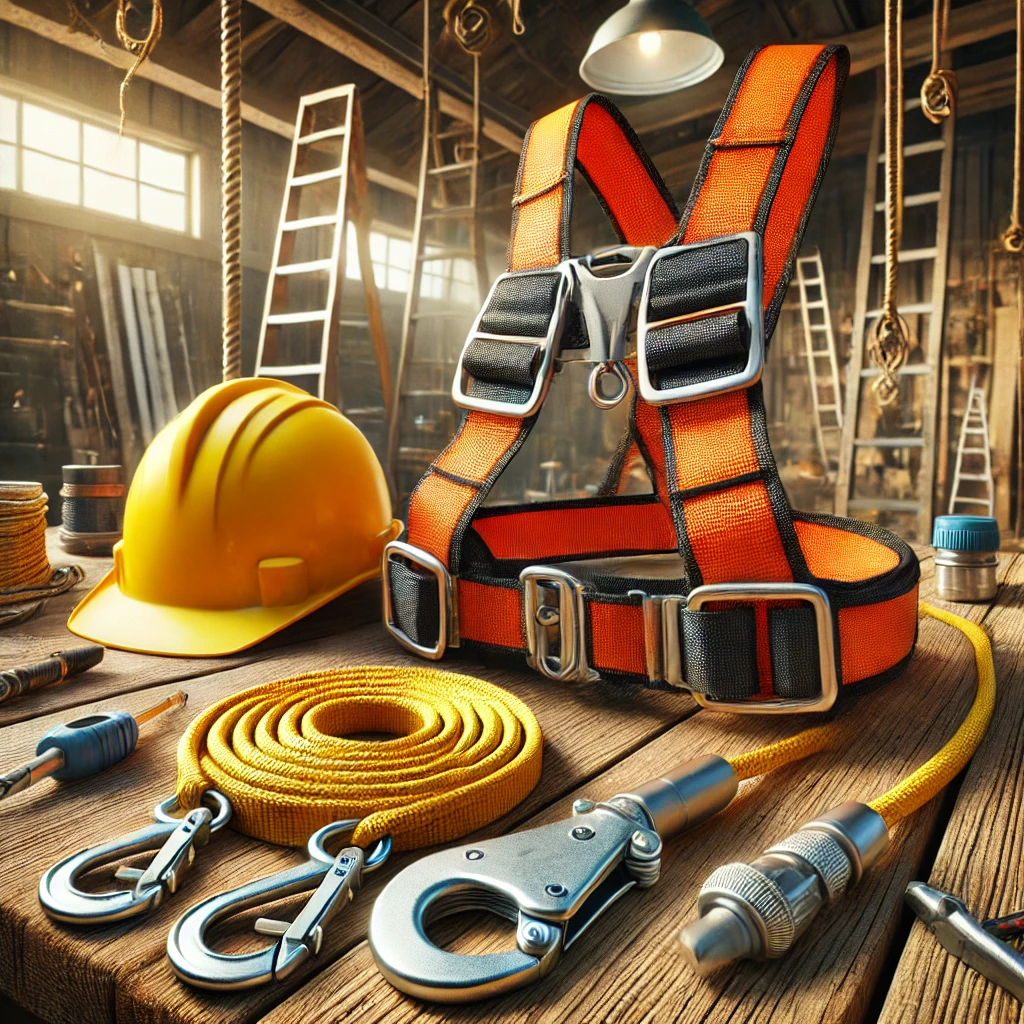Fall protection is essential for anyone engaging in DIY projects that involve working at heights. It ensures your safety by minimizing the risk of injuries from falls. Understanding the different types of fall protection, their key features, and how to use and maintain them properly can significantly reduce the chances of accidents.
Types of Fall Protection
- Guardrails: Physical barriers installed at the edge of a working area to prevent falls.
- Safety Nets: Nets installed below a working area to catch individuals if they fall.
- Personal Fall Arrest Systems (PFAS): Includes a body harness, anchor, and connector to arrest a fall in progress.
- Positioning Device Systems: Equipment that allows a worker to be supported on an elevated vertical surface and work with both hands free.
- Warning Line Systems: Temporary barriers set up to warn workers they are nearing an unprotected edge.
- Controlled Access Zones (CAZ): Designated areas where certain types of work may take place without the use of conventional fall protection systems.
Key Features of Fall Protection Equipment
- Durability: Made from strong materials that can withstand significant force.
- Adjustability: Ability to fit various body sizes and shapes.
- Comfort: Padded straps and ergonomic designs for long-term wear.
- Ease of Use: Simple to put on and adjust.
- Certifications: Compliance with safety standards such as OSHA, ANSI, or CSA.
Choosing the Right Fall Protection
Selecting the appropriate fall protection involves assessing the specific risks of your DIY project. Consider the height at which you’ll be working, the type of work surface, and the potential for a fall. Choose equipment that fits well and is suitable for the task. Always check for certifications and ensure the equipment meets relevant safety standards.
Proper Use and Techniques
To use fall protection effectively, follow the manufacturer’s instructions and safety guidelines. Ensure all equipment is correctly fitted and adjusted. Regularly inspect your gear before each use for any signs of wear or damage. Use appropriate anchorage points and connectors, and practice proper fall arrest techniques to minimize the impact in case of a fall.
Maintenance and Care
Maintaining your fall protection equipment is crucial for ensuring its effectiveness and longevity. Clean the gear according to the manufacturer’s recommendations, typically using mild soap and water. Store equipment in a cool, dry place away from direct sunlight and chemicals. Regularly inspect all components for signs of wear, damage, or corrosion, and replace any compromised parts immediately.
Safety Tips
- Always use fall protection when working at heights above 6 feet.
- Make sure all fall protection equipment is properly fitted and adjusted.
- Use only certified equipment that meets safety standards.
- Conduct regular safety checks and maintenance of your equipment.
- Stay informed about fall protection techniques and best practices through training and resources.
Conclusion
Fall protection is a critical component of safety in any DIY project involving heights. By understanding the different types, key features, and proper use and maintenance of fall protection equipment, you can significantly reduce the risk of falls and ensure a safer working environment. Prioritize your safety by investing in high-quality fall protection gear and staying informed about the best practices for using it.


